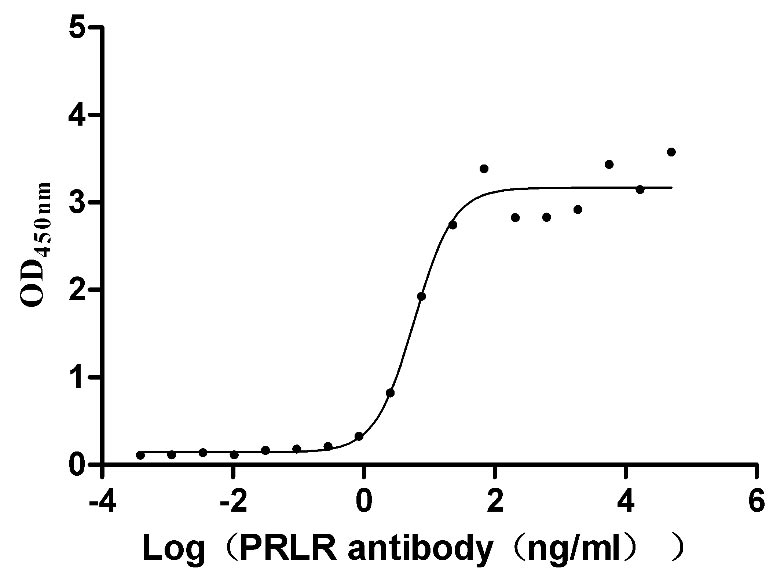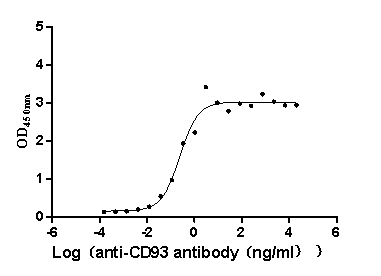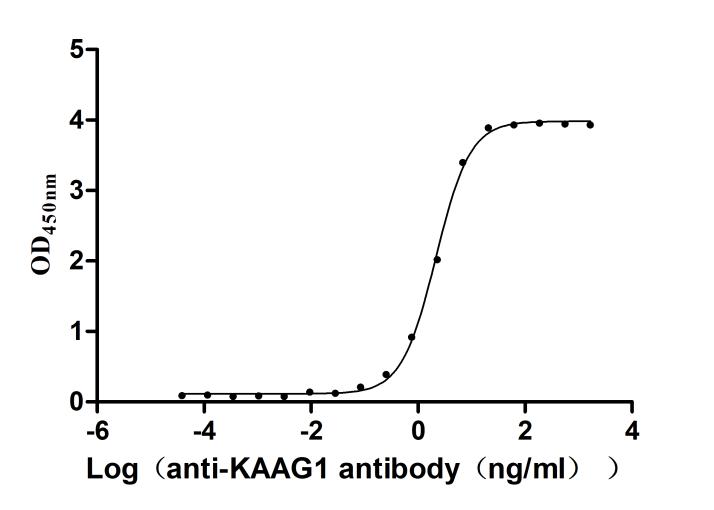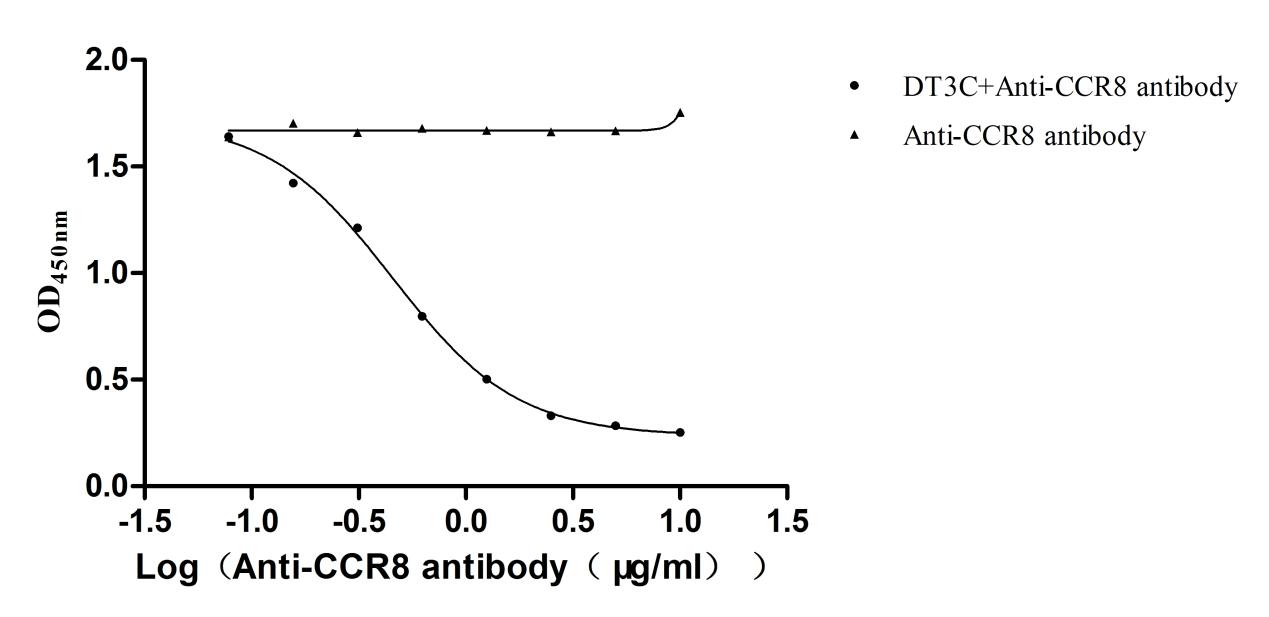Recombinant Influenza A virus Hemagglutinin (HA), partial
-
中文名稱:Recombinant Influenza A virus Hemagglutinin(HA) ,partial
-
貨號:CSB-YP879396IEF
-
規(guī)格:
-
來源:Yeast
-
其他:
-
中文名稱:Recombinant Influenza A virus Hemagglutinin(HA) ,partial
-
貨號:CSB-EP879396IEF
-
規(guī)格:
-
來源:E.coli
-
其他:
-
中文名稱:Recombinant Influenza A virus Hemagglutinin(HA) ,partial
-
貨號:CSB-EP879396IEF-B
-
規(guī)格:
-
來源:E.coli
-
共軛:Avi-tag Biotinylated
E. coli biotin ligase (BirA) is highly specific in covalently attaching biotin to the 15 amino acid AviTag peptide. This recombinant protein was biotinylated in vivo by AviTag-BirA technology, which method is BriA catalyzes amide linkage between the biotin and the specific lysine of the AviTag.
-
其他:
-
中文名稱:Recombinant Influenza A virus Hemagglutinin(HA) ,partial
-
貨號:CSB-BP879396IEF
-
規(guī)格:
-
來源:Baculovirus
-
其他:
-
中文名稱:Recombinant Influenza A virus Hemagglutinin(HA) ,partial
-
貨號:CSB-MP879396IEF
-
規(guī)格:
-
來源:Mammalian cell
-
其他:
產(chǎn)品詳情
-
純度:>85% (SDS-PAGE)
-
基因名:HA
-
Uniprot No.:
-
別名:HA; Hemagglutinin [Cleaved into: Hemagglutinin HA1 chain; Hemagglutinin HA2 chain]
-
種屬:Influenza A virus (strain A/Goose/Guangdong/1/1996 H5N1 genotype Gs/Gd)
-
蛋白長度:Partial
-
蛋白標簽:Tag?type?will?be?determined?during?the?manufacturing?process.
The tag type will be determined during production process. If you have specified tag type, please tell us and we will develop the specified tag preferentially. -
產(chǎn)品提供形式:Lyophilized powder
Note: We will preferentially ship the format that we have in stock, however, if you have any special requirement for the format, please remark your requirement when placing the order, we will prepare according to your demand. -
復(fù)溶:We recommend that this vial be briefly centrifuged prior to opening to bring the contents to the bottom. Please reconstitute protein in deionized sterile water to a concentration of 0.1-1.0 mg/mL.We recommend to add 5-50% of glycerol (final concentration) and aliquot for long-term storage at -20℃/-80℃. Our default final concentration of glycerol is 50%. Customers could use it as reference.
-
儲存條件:Store at -20°C/-80°C upon receipt, aliquoting is necessary for mutiple use. Avoid repeated freeze-thaw cycles.
-
保質(zhì)期:The shelf life is related to many factors, storage state, buffer ingredients, storage temperature and the stability of the protein itself.
Generally, the shelf life of liquid form is 6 months at -20°C/-80°C. The shelf life of lyophilized form is 12 months at -20°C/-80°C. -
貨期:Delivery time may differ from different purchasing way or location, please kindly consult your local distributors for specific delivery time.Note: All of our proteins are default shipped with normal blue ice packs, if you request to ship with dry ice, please communicate with us in advance and extra fees will be charged.
-
注意事項:Repeated freezing and thawing is not recommended. Store working aliquots at 4°C for up to one week.
-
Datasheet :Please contact us to get it.
靶點詳情
-
功能:Binds to sialic acid-containing receptors on the cell surface, bringing about the attachment of the virus particle to the cell. This attachment induces virion internalization either through clathrin-dependent endocytosis or through clathrin- and caveolin-independent pathway. Plays a major role in the determination of host range restriction and virulence. Class I viral fusion protein. Responsible for penetration of the virus into the cell cytoplasm by mediating the fusion of the membrane of the endocytosed virus particle with the endosomal membrane. Low pH in endosomes induces an irreversible conformational change in HA2, releasing the fusion hydrophobic peptide. Several trimers are required to form a competent fusion pore.
-
基因功能參考文獻:
- Positions 380-461 and 483-565 of HA were novel antigenic epitopes in mouse and chicken. PMID: 29869036
- a single nucleotide substitution, resulting in a change from Gly to Asp at position 225 (G225D), completely switches HA specificity to human-type (NeuAcalpha2-6Gal) receptors. PMID: 28694323
- results showed that a variety of HA variants emerged during single-virus infections of human airway cells, with variant HA properties selected for fitness for human cell infection. PMID: 29563293
- Data suggest that expansion of the vaccine hemagglutinin (HA) subunit 1 (HA1) 3D model database will improve international emergency responses to avian influenza virus (AIV). PMID: 28375167
- Glycosylation of the HA of avian influenza H5N1 modulates virus replication, virulence and chicken-to-chicken transmission. PMID: 27902339
- Addition of N-glycosylation sites on the globular head of the H5 hemagglutinin induces the escape of immunity. PMID: 26433051
- K193E and G225E mutations of HA synergistically attenuated H5N1 virus without enhancing the receptor-binding avidity. PMID: 25998916
- The influenza hemagglutinin fusion domain is an amphipathic helical hairpin that functions by inducing membrane curvature. PMID: 25398882
- Probe structure-function properties of the H5 hemagglutinin stem loop region by site-directed mutagenesis. Most mutations do not disrupt expression, proteolytis, incorporation into virus, or receptor binding; but many mutations disrupt the entry process. PMID: 24947513
- The growth of H5N1 avian influenza viruses is affected by changes of glycosylation sites in HA protein. PMID: 24386837
- D53, Y274, E83a, and N276 in HA are conserved neutralization epitope identified by H5M9 antibody. PMID: 24049169
- Studies indicate that antigenic drift mutations in immune-dominant regions on the hemagglutinin (HA) structure allow the virus to escape neutralizing antibody (Ab) neutralization. PMID: 23933511
- Parainfluenza virus 5 mutants expressing hemagglutinin HA from H5N1 virus induced the highest levels of anti-HA antibodies, the strongest T cell responses, and the best protection against an H5N1 lethal challenge in mice. PMID: 23804633
- A single, acid-stabilizing mutation enhanced growth of virus in upper respiratory tract, yet was insufficient to enable transmission in ferrets in the absence of mutations for alpha(2,6) receptor binding specificity and that remove a glycosylation site. PMID: 23824818
- Increasing the pH stability of the H5 HA resulted in increased viral shedding of H5N1 from the nasal cavity of ferrets. PMID: 23486663
- The pH of activation of the HA protein regulates H5N1 influenza virus replication and pathogenesis. PMID: 23449784
- a single residue substitution in the receptor-binding domain of H5N1 hemagglutinin is critical for packaging into pseudotyped lentiviral particles PMID: 23133587
- the HA 3' NCR sequence of NIBRG-14 is different to that of the parental wild type virus A/Vietnam/1194/2004; however this does not appear to impact on its growth or antigen yield PMID: 22606247
- The hemagglutinin cleavage site contributes to the pathogenicity of H5N1 influenza virus. PMID: 22496231
- Expression of NS1 in trans rescues HA protein and mRNA expression from NS1-truncated viruses. PMID: 22398291
- The multibasic cleavage site in HA is critical for virus spread along the olfactory and hematogenous routes in ferret model. PMID: 22278228
- The multibasic cleavage site of the hemagglutinin acts as a virulence factor in a host-specific manner in mammals. PMID: 22205751
- Only the HA, and not the NS, gene from the 2004 H5N1 virus induces IL-1beta, MIP-lalpha, IL-8 and IL-18 cytokine productions from activated U937 cells PMID: 22299315
- analysis of a fusion intermediate of influenza hemagglutinin with a cholesterol-conjugated peptide PMID: 21994935
- Mutation at position 90 and 160 in the hemagglutinin determine avian-to-human interspecies transmission. PMID: 21744000
- Mutations in the receptor binding domain of HA did not increase the transmissibility of avian influenza H5N1 viruses to human cell. PMID: 21397290
- HA proteins of H1N1 and H5N1 influenza A viruses activated dendritic cells. PMID: 20844030
- Mutations within HA 219-240 region at the position D239 (D239E/G/N) are reported with higher frequency. PMID: 20160492
- Five of the antibodies which showed binding to the relatively conserved HA2 subunit of HA, exhibited neutralization of H5N1-VLP uptake in a dose dependant manner PMID: 18957074
- A highly conserved mimotope is present in HA of various H5N1 subtypes. PMID: 19226949
- One double mutation (V135S and A138S) in hemagglutinin significantly enhances alpha-2,6-linked receptor recognition by the H5 subtype. PMID: 19399777
- Results demonstrate the existence of immunodominant positions in the H5 HA protein, alteration of these residues might improve the immunogenicity of vaccine strains. PMID: 19798682
- analysis of HA sequences revealed that the peptide sequences around the glycosylation sites are highly conserved, which suggests a central functional significance for HA glycosylation PMID: 19822741
顯示更多
收起更多
-
亞細胞定位:Virion membrane; Single-pass type I membrane protein. Host apical cell membrane; Single-pass type I membrane protein.
-
蛋白家族:Influenza viruses hemagglutinin family
-
數(shù)據(jù)庫鏈接:
KEGG: vg:3654620
Most popular with customers
-
Recombinant Mouse Prolactin receptor (Prlr), partial (Active)
Express system: Mammalian cell
Species: Mus musculus (Mouse)
-
Recombinant Macaca fascicularis CD93 molecule (CD93), partial (Active)
Express system: Mammalian cell
Species: Macaca fascicularis (Crab-eating macaque) (Cynomolgus monkey)
-
Recombinant Human Kidney-associated antigen 1 (KAAG1) (Active)
Express system: E.coli
Species: Homo sapiens (Human)
-
Recombinant DT3C (Diphtheria toxin & spg 3C domain) for Antibody Internalization Assay (Active)
Express system: E.coli
Species: N/A















